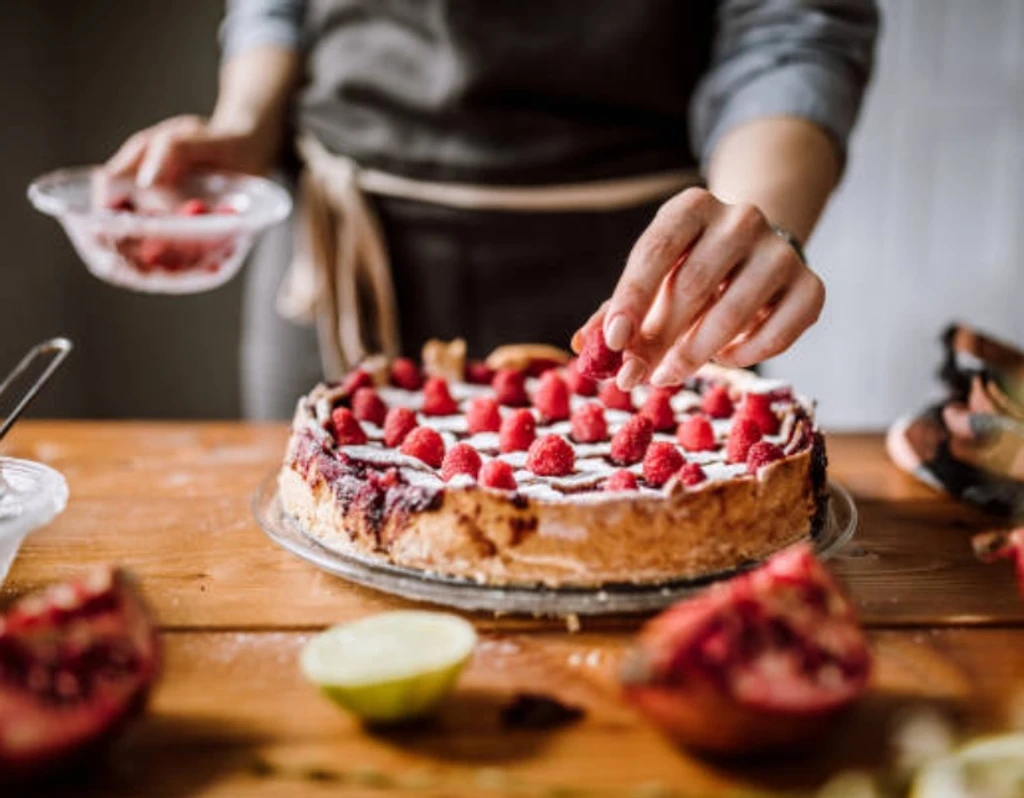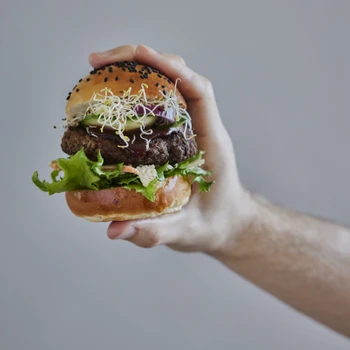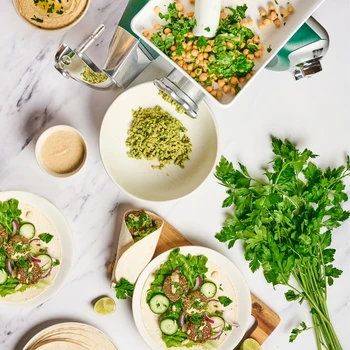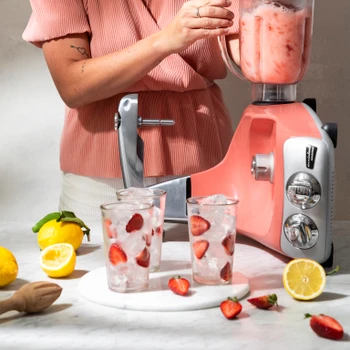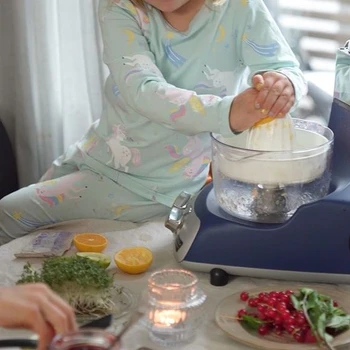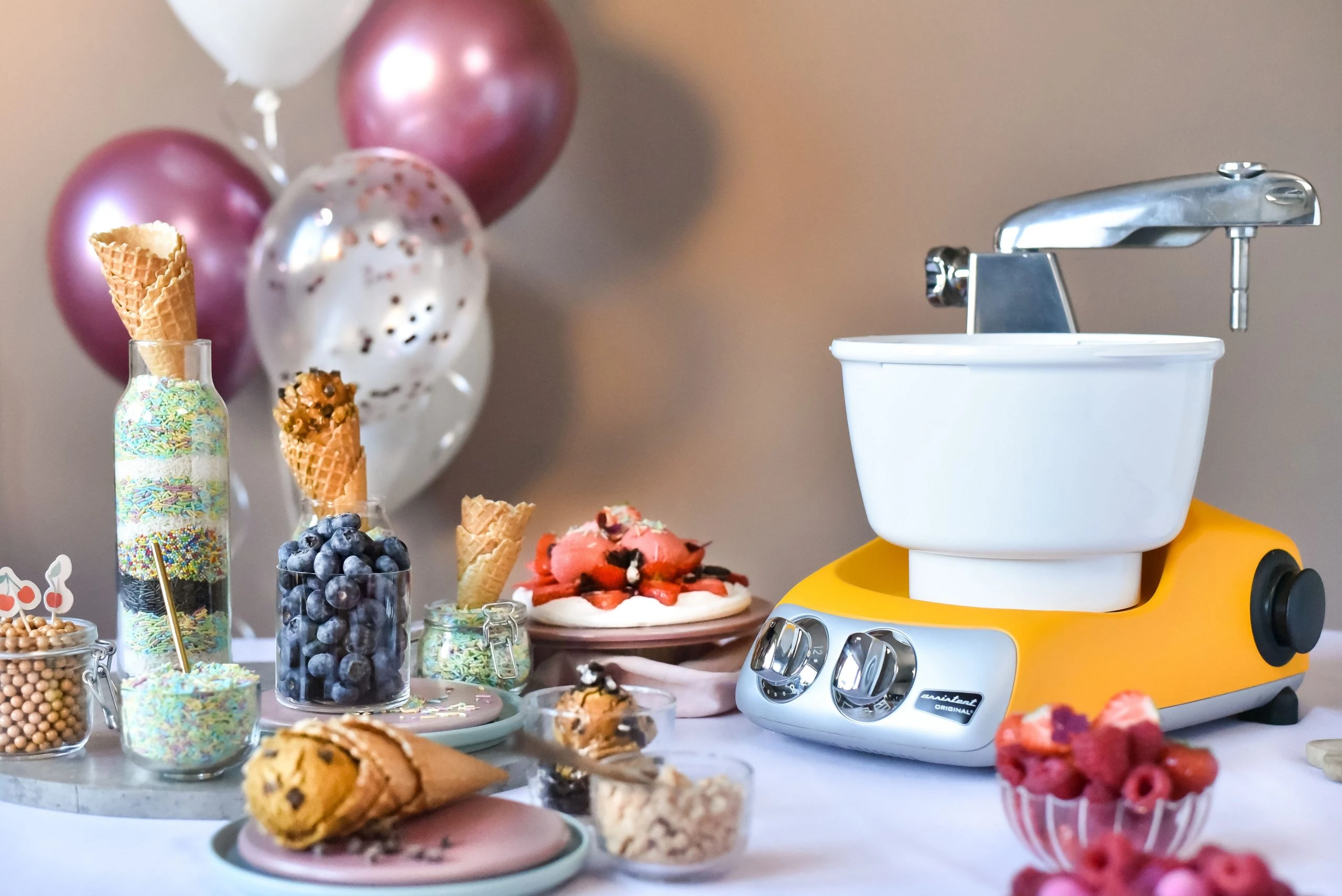Baking gluten-free means excluding from your baking cereals, such as wheat, rye and barley, that contain gluten. Gluten is a protein with properties that, among other things, stabilise the bread, make the dough elastic, and help the dough to rise and the bread to be airy and moist. When making gluten-free bread, you therefore need to find a substitute for gluten, otherwise the bread will be dry, flat and crumbly. Psyllium husk is one such ingredient that you can use in gluten-free doughs. Psyllium husk binds a lot of liquid and so makes the dough stick together and become more elastic, enabling it to be shaped and helping to make the bread moist and airy. Xanthan gum and Pofiber (potato fibre) are other examples of so-called stabilisers that can be used as substitutes for gluten.
Airy bread
If you want your bread to be airy, it is also important to combine and work the dough properly. A gluten-free dough should generally be looser than a normal dough, otherwise the bread will be dry. This makes the dough tricky to knead by hand because it is too sticky, which is why an Ankarsrum Assistent is indispensable when baking gluten-free. When making gluten-free bread using an Ankarsrum Assistent, it is best to dissolve the yeast in the dough liquid first, directly in the bowl, and then to whisk in the psyllium husk if using it in the recipe.
The easiest way to do this is by hand. The liquid should then be left to stand and will swell to form a gel in about 10 minutes. You can now add the rest of the ingredients, such as gluten-free flour, salt, oil and the other ingredients listed in the recipe. It is possible to add these ingredients all at once, but it is a good idea not to add all the flour in one go, but to keep back about a quarter of it.
Let the Assistent work the dough for a few minutes and then add the rest of the flour gradually to make sure the dough is worked properly. Ankarsrum’s dough roller and dough knife are particularly good at working gluten-free dough because they are suited to loose doughs and produce the best results – a well-combined dough. A gluten-free dough does not need to be kneaded as much as a normal dough, because there is no gluten in it to form a network of strands, which happens during kneading. However, gluten-free dough does need to be well mixed and the dough roller does this better than a dough hook.
When dough made in the Assistent is ready, it will still be loose and sticky. Don’t be tempted to add more flour as this will make the bread dry and dense. The dough will be less sticky once it has proved. Try to avoid kneading in more flour after proving as well; instead, apply a dusting of flour to the surface when you are ready to shape the dough. One tip is to moisten your hands with water or oil when shaping the dough for baking, which stops it sticking to your hands and avoids adding more flour.
Gluten free sourdough
Baking with a sourdough starter is also popular, and you can bake good gluten-free sourdough bread very easily. A starter dough gives sourdough bread a fine texture and a good flavour; it also makes the bread more digestible. The principle for gluten-free sourdough is the same as for ordinary sourdough except that you use gluten-free flour. It is also a good idea to add something sweet, such as honey or grated apple, to the sourdough starter to speed up the fermentation process. It is worth knowing that gluten-free sourdough does not rise as much as a normal sourdough. The best gluten-free flours to use in a sourdough starter are sorghum flour, rice flour and cornflour.
There are a number of different gluten-free flours. For anyone new to gluten-free baking, it can be a good idea to start with a gluten-free flour mix, because that is the easiest way to ensure a good end result. Gluten-free flour mixes contain a blend of gluten-free flour, starch and stabilisers that give the mix similar properties to flour that does contain gluten. A tip is to use tried-and-tested gluten-free recipes to start with until you have developed a feel for how gluten-free doughs and gluten-free baking works.
Flour without gluten
Different types of flour have different tastes and baking qualities, which means it is rarely possible to replace wheat flour in a recipe with a gluten-free alternative. To get the best flavour and texture out of gluten-free bread, it can help to use several different types of flour in one and the same recipe. Sorghum flour and rice flour are examples of flours with relatively neutral flavours and they can be used in larger amounts in a dough. Buckwheat flour, chickpea flour and soya flour have a slightly stronger flavour and are best used together with a more neutral flour. Oatmeal, sorghum and teff flour are nutrient-rich flours, while cornflour and potato flour contain a lot of starch with a high percentage of carbohydrates and work a bit like a thickening agent. Browse the flour shelves and you’ll discover a whole new world of exciting flour choices. Try anything you like, dare to experiment in the kitchen, and don’t be afraid to fail. The more you bake, the more you learn and the more fun it will be!
Tips for successful gluten-free baking:
Use a weighing scales. Gluten-free flour packs down easily and so weighing the ingredients gives a more accurate result than measuring them out.
Work the dough properly in an Assistent to get the best results.
Moisten your hands with water or oil when you shape the bread to stop the dough sticking.
Allow the dough to be sticky; if you add too much flour, the bread will be dry.
Preferably bake loaves in a tin and buns in a muffin tray. This way the bread keeps its shape and doesn’t spread across the tray.
Leave the bread to cool properly before cutting it. Gluten-free bread is often doughy inside straight from the oven and needs a few hours to stand.
Remember that gluten-free baking is no more difficult than baking with gluten; it’s just about learning to think a little differently!
